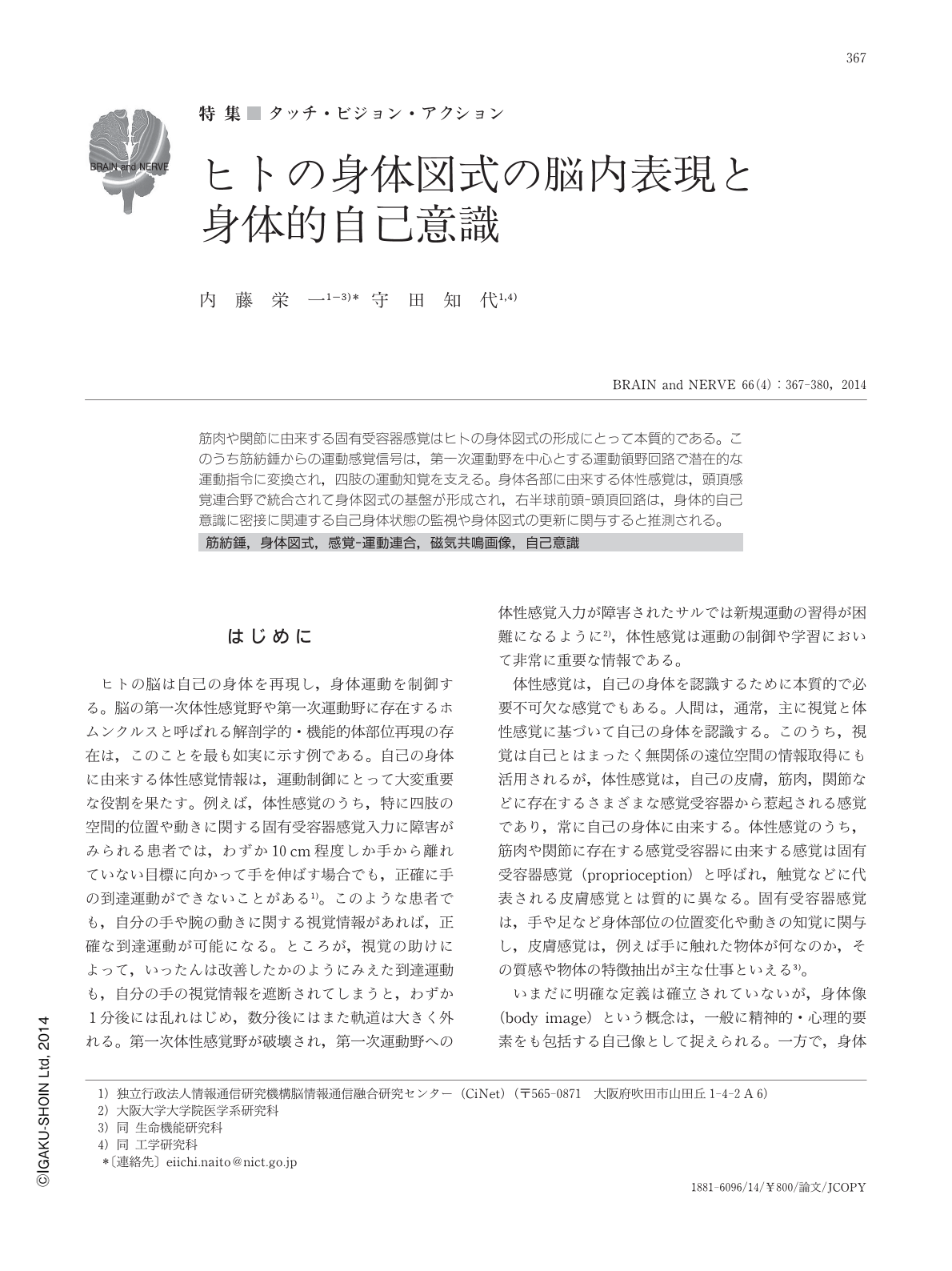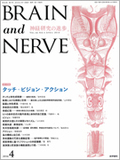Japanese
English
- 有料閲覧
- Abstract 文献概要
- 1ページ目 Look Inside
- 参考文献 Reference
筋肉や関節に由来する固有受容器感覚はヒトの身体図式の形成にとって本質的である。このうち筋紡錘からの運動感覚信号は,第一次運動野を中心とする運動領野回路で潜在的な運動指令に変換され,四肢の運動知覚を支える。身体各部に由来する体性感覚は,頭頂感覚連合野で統合されて身体図式の基盤が形成され,右半球前頭-頭頂回路は,身体的自己意識に密接に関連する自己身体状態の監視や身体図式の更新に関与すると推測される。
Abstract
The human brain processes every sensation evoked by altered posture and builds up a constantly changing postural model of the body. This is called a body schema, and somatic signals originating from skeletal muscles and joints, i.e. proprioceptive signals, largely contribute its formation. Recent neuroimaging techniques have revealed neuronal substrates for human body schema. A dynamic limb position model seems to be computed in the central motor network (represented by the primary motor cortex). Here, proprioceptive (kinesthetic) signals from muscle spindles are transformed into motor commands, which may underlie somatic perception of limb movement and facilitate its efficient motor control. Somatic signals originating from different body parts are integrated in the course of hierarchical somatosensory processing, and activity in higher-order somatosensory parietal cortices is capable of representing a postural model of the entire body. The left fronto-parietal network associates internal motor representation with external object representation, allowing the embodiment of external objects. In contrast, the right fronto-parietal regions connected by the most inferior branch of superior longitudinal fasciculus fibers seem to have the functions of monitoring bodily states and updating body schema. We hypothesize that activity in these right-sided fronto-parietal regions is deeply involved in corporeal self-consciousness.

Copyright © 2014, Igaku-Shoin Ltd. All rights reserved.


